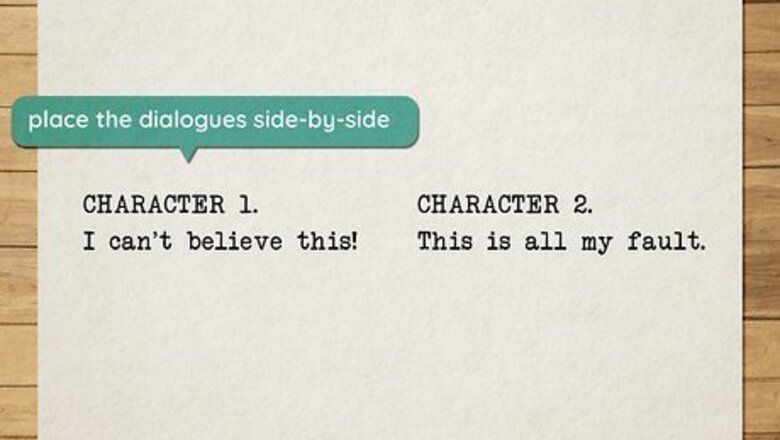
views
- Format overlapping dialogue in scripts by placing dialogue side-by-side.
- Indicate which characters are speaking in prose using dialogue tags like “they said” or “said at the same time.”
- Give each character a unique voice, so their dialogue stands out on the page.
How do you format overlapping dialogue in a screenplay?
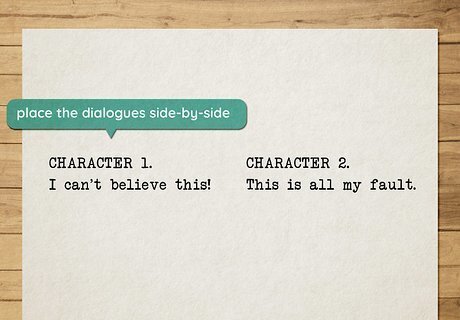
If you’re writing a script, place dialogue side-by-side on the page. Whether you’re writing a script for the screen or stage, the formatting of overlapping dialogue is relatively the same. Indicate that more than one character is speaking in the stage directions, then insert the dual dialogue side-by-side using a table in your word processor. CHARACTER 1. CHARACTER 2. I can’t believe this! This is all my fault. Stage directions are non-spoken instructions written in the script that refer to lighting, sound, costumes, props, scenery, camera angles, and character emotions and movements.
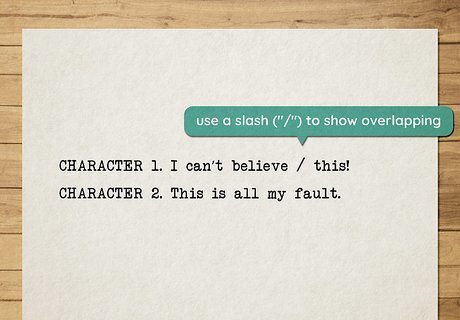
Show a character talking over someone with a “/.” Playwrights and screenwriters can also use a slash (“/”) to indicate when a character starts speaking at the same time as another character. The actor doesn’t say “slash” while saying their line, but it signals another actor to begin their line once the first actor says a specific word. For instance: CHARACTER 1. I can’t believe / this! CHARACTER 2. This is all my fault.
How do you write overlapping dialogue in prose?
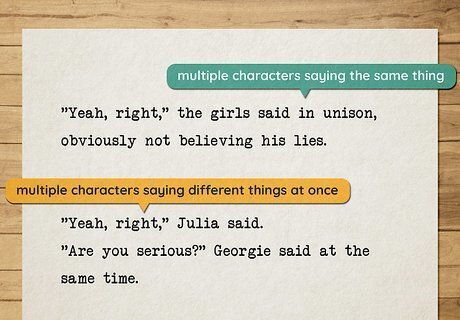
Use dialogue tags to show that two or more characters are talking. In a novel or short story, dialogue tags are the “he/she/they said” of a line of dialogue that identify who is speaking. There are two ways you can use dialogue tags to represent more than one character speaking: (1) use one line of dialogue with a tag expressing that multiple characters are saying the same thing at once, or (2) use separate lines for different dialogue said at the same time. Here are some examples: Multiple characters saying the same thing: “Yeah, right,” the girls said in unison, obviously not believing his lies. “Yeah, right,” they mutter. Together, the girls cross their arms and say, “Yeah, right.” I look over at Julia and know exactly what she's thinking. We say as one, “Yeah, right.” Multiple characters saying different things at once: “Yeah, right,” Julia said. “Are you serious?” Georgie said at the same time. “Yeah, right,” I say, while, at the same time, Georgie exclaims, “Are you serious?”
Tips for Writing Dialogue

Remove greetings and small talk from your dialogue. When you’re writing dialogue, it’s important to remember your character(s)’s motivation—why are they saying what they’re saying? We use a lot of fluff when chatting in real life, but small talk about the weather or hellos may bore readers and draw them away from the page. Keep the civilities to a minimum and focus on the discussion's main subject (why, who, what, and how). Now, there are always exceptions to this. Suppose you’re introducing a character to another character for the first time. In that case, greetings may be necessary but won’t be needed every time the character appears.
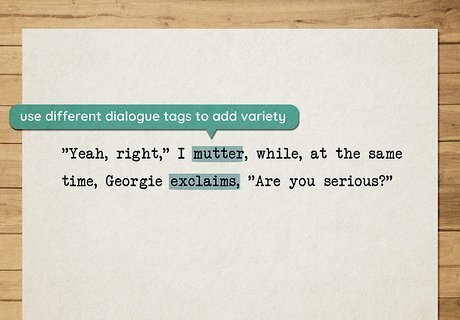
Use different dialogue tags to add variety to scenes. “Said” is the universal dialogue tag; however, this doesn’t mean you have to use it every time a character speaks. Stick to using “said” 80 to 90% of the time, but also play around with different phrases, tags, and expressions. Here are some different dialogue tags you can try: Acknowledged Noted Stated Muttered Asked Gushed Exclaimed Groaned Agreed Grumbled Stuttered
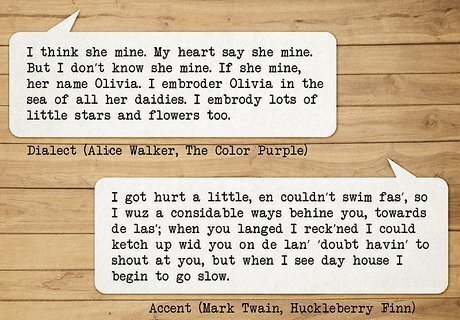
Make your character(s) voice stand out with dialects and/or vocabulary. Your characters are one of a kind, so don’t be afraid to give them speaking quirks and express their opinions. Give characters specific speech patterns or word choices. Not only does this help define a character’s personality, but it also helps define the character on the page. Think about when you talk with a group of friends—you all don’t use the same lingo or vocabulary, right? The same goes for your characters! Dialect: “I think she mine. My heart say she mine. But I don’t know she mine. If she mine, her name Olivia. I embroder Olivia in the sea of all her daidies. I embrody lots of little stars and flowers too.” (Alice Walker, The Color Purple) Accent: “I got hurt a little, en couldn’t swim fas’, so I wuz a considable ways behine you, towards de las’; when you langed I reck’ned I could ketch up wid you on de lan’ ‘doubt havin’ to shout at you, but when I see day house I begin to go slow.” (Mark Twain, Huckleberry Finn) Expressing opinion: “”They’re certainly entitled to think that, and they’re entitled to full respect for their opinions,” said Atticus, ‘but before I can live with other folds I’ve got to live with myself. The one thing that doesn’t abide by majority rule is a person’s conscience.’” (Harper Lee, To Kill a Mockingbird)

Determine the who, what, where, and why of a character’s situation. The speaking style of a character will change depending on what they’re doing and who they’re interacting with. For example, if a hot-headed character is angry, they’re not going to speak calmly if they’re insulted. Keep the character’s personality and surroundings in mind while writing dialogue to create authentic interactions. Ask yourself these questions about your character: Who are they talking to or with? What are they doing physically? What are they thinking emotionally? Where are they located? Why are they in this scene?
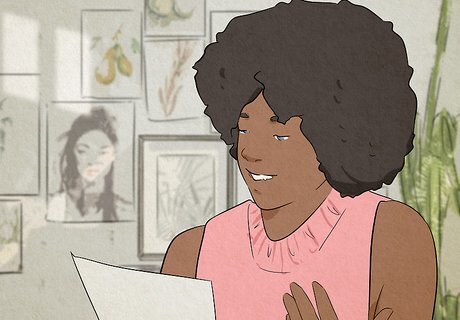
Read your dialogue out loud. Anything that doesn’t sound right won’t read right. This is especially important if you’re writing characters with accents or a specific dialect. Take some time to read your characters’ conversation aloud and ask yourself: (1) Does the conversation flow naturally? (2) Can I distinguish the voices of my characters? (3) Is something important revealed during the conversation? Ask a friend or family member to read your dialogue out loud to hear it from someone else’s voice. Consider copying and pasting the dialogue into Google Translate or another speech program so the computer can read it back to you. If the conversation doesn’t sound right, go back and revise. Pretend you’re your character(s). What would you say in the given situation or in response to someone else? Sometimes even changing one word can make a huge difference!















Comments
0 comment